AAC For Children With Cerebral Palsy
Cerebral palsy occurs when a baby’s developing brain suffers damage (usually during pregnancy, childbirth, or shortly after birth), which impairs the brain’s ability to exercise muscle control. In addition to the physical impairments resulting from this condition, children and even teenagers with cerebral palsy caused by a birth injury or neonatal injury will often have impairments related to speech, hearing and/or vision.
Generally, sign language is generally useful for people with communication disabilities. But children that suffer from cerebral palsy may not have the coordination and dexterity needed for sign language due to the damage to the brain that controls motor skills. As a result, children suffering from cerebral palsy made need augmentative and alternative communication (AAC) devices in order to help them interact with others.
What is AAC?
An AAC is any tool that helps an individual express themselves including all augmentative and alternative communication devices. For example, facial expressions, hand gestures, pictorial communication, and writing or typing would all constitute different types of AAC on the most basic levels. Augmentative and alternative communication can be aided or unaided.

Unaided AAC includes all types of non-verbal communication that takes place without the involvement of assistive devices or technology. Historical basic examples include making faces, waving hands, or using sign language. With technological advances, Aided AAC now includes communication that involves the use of assistive equipment or technology. Examples include communication boards, speech generating devices, hearing devices, and software based devices.
AAC Devices for Children with CP: What does the Research Say?
The National Institutes of Health (NIH) published a case study, which evaluated the efficacy of augmentative and alternative communication equipment for a high school junior with cerebral palsy who started using it to communicate with others. Researchers found that:
- The intelligibility of the student improved
- The student developed more productive relationships with peers
- The student began to socialize in a better way
- The teaching staff was able to engage more comfortably with the student
Another research study conducted by the professors at the California State University at San Marcos and the University of San Diego along with AssitiveWare examined the benefits of Apple devices related to AAC. The results showed that up to 80% of the users of augmentative and communication devices experienced improvements in behavior, independence, and general well-being.
Types of AAC Devices for Children with Cerebral Palsy
Symbols
Symbols are a type of representation system used in augmentative and alternative communication for children and teens with cerebral palsy. Symbols may include gestures, hand signals, line drawings, pictures, images, letters, and words. Based on the abilities of the AAC user, an appropriate symbol system can be chosen. In many cases, different symbol systems may be used in different situations.

- Blissymbolics: It is one of the major symbol systems involving linguistic characteristics. This graphical language comprises over 5,000 authorized symbols (known as Bliss-words or Bliss-characters). Children and teens with CP who have severe physical and speech impairments can use this generative language to communicate with others.

- Picture Communication System (PCS): This system relies on realistic images in black & white or color, or line drawings for communication. Depending on the user’s ability, they can choose line drawings or detailed images in color to communicate. The symbols in PCS are usually located on traditional communication boards or electronic screen displays.

- Picture Exchange Communication System (PECS): In this system, pictures in tactile form are used. The images are imprinted on cards, and the child with CP can move them around to create a message. Other tangible things or miniature objects that represent a real item can also be a part of this symbol system.
Manual Communication Board
This is a low-tech solution that enables children with CP who have speech limitations to communicate by selecting symbols, words or pictures from a laminated sheet. The board will include items that are appropriate to the child’s abilities and skills. Boards for school activities, meal time and bedtime can enable faster and more effective communication between the child and the caregiver.

The child may begin with a singular communication board, and then graduate to using a flipbook. A flipbook comprises multiple boards, including the alphabet, parts of speech, core vocabulary, common responses (yes or no), descriptive words (hot or cold), punctuation, common feelings (happy or sad), and frequent questions. Boards can be color-coded and their layout can be customized with help from a therapist, teacher or aide.
Using manual boards as an additional augmentative communication device is often helpful even when the child is using an electronic communication board.
Electronic Communication Board

An electronic communication board is basically a digital tablet device. It contains symbols, photos and letters that a child with CP can point to using a pointer tool or a finger. The board enables the child to express their needs, emotions, or thoughts by choosing items from an interactive screen. The board will convert the selected symbols, pictures or words into coherent sentences and vocalize them aloud for others to hear.
In general, an electronic communication board can generate up to 12 words per minute. The child or teen with CP may have to be provided with some training to operate the device. Some high-tech electronic boards also come with pre-recorded messages or the device may allow the user to record core words or messages for every picture. The message can be played back with the press of a button.
A Speech Language Pathologist (SLP) may be required to teach the child how to communicate using this assistive device. Recently, children have been able to use certain tablets or a smartphones with assistive communication apps as substitutes for an electronic communication board.
Aids for Writing and Typing
Young children or teens with cerebral palsy may sometimes be more comfortable using writing and typing aids to communicate through written words. But due to common motor skills deficits experienced by children with CP, using a regular keyboard or holding a normal pen may not be viable in many cases. Specific aids are now available to provide the user with better control to write or type out their message.
- Pencils with Grip: Pencils with special grips in different shapes are available for children with CP. The device allows the user to correctly position their fingers and maintain some degree of movement control, and write without excessive hand fatigue.
- Wrist Support: This assistive device is designed to hold the child’s hand in extension in order to give support to a weak wrist. A special writing instrument can be used with wrist support to write a message. Wrist support designs are usually similar to splints or full braces.
- Typing Aids: A child or teen with CP who has limited hand or arm mobility might use typing aids. The device is fastened with an elastic brace or Velcro around the child’s hand. It includes a metal pointer, which can used to steadily push buttons on a phone or press down the keys on a special keyboard.
Voice Output Communication Aids (VOCA)

VOCAs are augmentative and alternative communication devices that make use of digitally stored speech as a means of communication. Individual words or phrases can be pieced together to form sentences or extended messages using the vocabulary stored in the device memory. Depending on the device, the speech output may utilize pre-recorded (digitized) or artificial (synthesized) speech, or a combination of the two.
Synthesized or artificial speech is computer generated, while digitized speech includes spoken words recorded directly into the VOCA. A child with cerebral palsy can operate a VOCA according to their ability by:
- Using a touchscreen
- Pressing buttons
- Typing text
- Scanning grids using different inputs
- Operating switches with any controllable body movement
Some VOCA models are handheld, while others can be mounted on a wheelchair or set up with a desktop. Touchscreen VOCAs typically allow the user to adjust the layout and content of the display according to individual preferences. Some of the more advanced VOCA touchscreen models provide superior processing power and features.
Children and teenagers with cerebral palsy can satisfy many of their AAC needs using VOCAs. Some of the contemporary VOCA models may also offer:
- Internet browsing
- Bluetooth connectivity
- Social media access
- Phone call, texting, and email
- Infrared control of TV
- Accessible apps for images, videos, and music
Eye Tracking Devices
Eye tracking technology is taking augmentative and alternative communication for children with cerebral palsy to the next level. Eye tracking devices enable the child or teen with limited physical movement as well as speech impairment to use the iris of their eye to give commands to a software system, which in turn speaks for them.
A cerebral palsy patient who finds it difficult to move hands, fingers, wrists, and arms can simply use their gaze instead of physical movements to control computerized devices for communication. Using their gaze on the computer screen, the child or teenager can select, zoom, scroll, or carry out other mouse functions. In addition to using a computer, eye trackers can also be used to operate electronic communication boards and select the desired words and sentences to communicate.
When combined with other software programs or apps, eye tracking or eye gazing technology can also be used for phone calls, dictation, emails, texting, gaming, and social media networking. While assessing the candidates for eye tracking devices, the therapist should take into consideration their visual and cognitive abilities, positioning, and other physical aspects.
Eye Control Feature in Microsoft Windows OS
Eye control feature in MS Windows 10/11 can enable a child or teen with cerebral palsy to communicate using text-to-speech, type using the on-screen keyboard, and control the mouse cursor. A built-in hardware based camera is included, but a compatible eye tracker must be separately purchased to use this feature.
To operate the Eye Control feature, the user will turn it on in their laptop or PC. A Launchpad will appear on the screen, and the user is required to gaze at the screen to activate it. Once the Eye Control is activated, the user can operate the mouse cursor from the Launchpad. They can simply position their eyes on the spot where they want the cursor to show.
Similarly, using the gaze an on-screen keyboard can be activate from the Launchpad. Thereafter, the user just has to look at the characters they wish to type. When the user wants to read the content on the screen, they can use the text-to-speech button with Eye Control, simply by gazing on the button on the Launchpad. Once the Play button is activated in the on-screen keyboard, it will read the text aloud.
Cochlear Implants:
Addressing hearing loss that occurs with Cerebral Palsy
For a child or teen with cerebral palsy, hearing impairment can create additional complications apart from their physical and cognitive challenges. In many cases of cerebral palsy, hearing impairment is a permanent condition, which cannot be corrected with therapy. However, a cochlear implant is a cutting-edge assistive device for those who are coping with severely impaired hearing.
A cochlear implant is an intricate device that combines microphones, stimulators, transmitters, and speech processors to deliver messages to the auditory system. The implanted device enables the auditory nerve to sense sound. It may allow the hearing-impaired child to hear loud noises, and in some cases, provide them the ability to hear and comprehend speech.
The device constitutes two parts: an implant that is surgically inserted underneath the ear tissue, and an external device that is placed discreetly behind the ear. A cochlear implant is different from a hearing aid (which merely amplifies the sound to audible levels). The implant is designed to bypass the damaged parts of the ear by stimulating the auditory system, which interprets the incoming signals as sound. Here’s how it works:
- The microphone in the cochlear implant picks up the sounds
- The speech processor component organizes different sounds to assist the user in discerning sound
- The receiver and transmitter (external component) receives the speech processor’s signals and converts them into electric impulses
- The electrodes in the cochlear implant collect the impulses and deliver them to the auditory nerve

The FDA has approved the use of cochlear implants for children who at least one year old. This device is more appropriate for children or teens with severe hearing loss. In case of moderate hearing impairment, the child may benefit from less invasive devices or external hearing aids.
Accessibility Features in Apple Mobile Devices
The popular Apple mobile devices, such as the iPhone, iPad and Apple Watch include certain accessible communication features that may help children and teens with cerebral palsy communicate. Some of these features include:
- VoiceOver: For kids and teens with vision impairment resulting from cerebral palsy, this innovative screen reader can inform what is happening on the device. VoiceOver describes text, graphs, objects, and people in detail. Auditory descriptions of various device elements enable the user to navigate the screen easily using simple gestures on a trackpad or touchscreen or with the help of a Bluetooth keyboard.
- Voice Control: Users with mobility issues due to cerebral palsy can navigate the Apple device simply using their voice. Vocal commands, such as click, tap, and swipe can enable easy interaction with various apps. Voice Control also provides a more convenient option to write and edit by text dictation and verbal commands.
- AssistiveTouch: This feature allows a kid with cerebral palsy to adapt the device touchscreen to fit their unique physical needs. If the user is unable to work with gestures like tap or pinch, they can substitute with another gesture or even create a touch of their own. Children with upper body limb difficulty can use this feature on Apple Watch to navigate a motion point or answer phone calls.
- Siri: With Siri, the user can perform multiple communication activities on any Apple device without having to pick up the device or even having to lift a finger. Just a simple voice command, such as “Good Morning” can show the weather, pull up directions, send a message, and start a podcast – all at once. The feature works in multiple languages.
- Sound Recognition: Young kids and teens with hearing impairment due to cerebral palsy can use this feature to become aware of certain sounds. Sound Recognition leverages on-device intelligence to listen to specific sounds and notifies the user when a particular sound is detected. The user will get a notification when a particular sound, such as the crying of a baby or the ringing of a doorbell, is detected.
- Sensory Alerts: For users with cerebral palsy who have hearing impairment, it is possible to receive vibrating or visual alerts for incoming calls, emails and text messages. Sensory alerts, such as an LED flash light can also be set up for calendar events. The feature works on all Apple devices, including the iPhone, iPad, Mac, and Apple Watch.
- Spoken Content: Children and teens with cognitive impairment can enhance their reading and writing ability with Spoken Content. Its Speak Screen feature allows the user to hear the complete screen read aloud. The Speech Controller feature enables them to control the playback of speech. The user can have a particular section of the text read out to them with the Speak Selection feature. The user can also have each letter they type spoken aloud to them using the Typing Feedback feature.
- Background Sounds: To mitigate cognitive dissonance, this feature can allow a young person with cerebral palsy to cut down distractions and improve their calmness and sense of focus. The user can choose from calming background sounds, such as distant rain, soothing stream, or ocean waves to mask external noises.
- Guided Access: Children or teens with cognitive difficulties can use the Guided Access feature to stay focused on the app they are using or the particular task at hand. With this feature, the Home button can be disabled so that the device stays confined to a single app at a time. Access to the touch input or keyboard can be restricted to ensure that wandering gestures or taps do not distract them from learning.
5 AAC Apps for Kids and Teens with Cerebral Palsy

Here are five popular augmentative and alternative communication apps to consider for kids with cerebral palsy:
This app for iOS is a full-featured AAC solution for children with speech difficulties due to cerebral palsy. It offers high-resolution symbols, natural sounding voices (text to speech), and an expandable vocabulary of more than 7,000 items.
This is a free augmentative and alternative communication mobile app for children with limited or no speech to help them communicate. The app includes preloaded communication boards with recorded messages and symbols to enable verbal messages.
Medical grade AAC apps are available from Touch Voice, which enable communication through speech synthesis by clicking on or touching buttons. Touch Voice apps are designed for both iOS and Android platforms and work on phones, tablets, and laptops.
Children in all age groups who are unable to use their natural voice due to cerebral palsy can benefit from this research-based communication app. It offers dynamic and easy-to-use options for communication in order to participate in everyday activities.
ArtikPix enables speech articulation practice for children with CP through the use of flashcards and other matching activities. The app allows the users to create or share their own cards and features a built-in scoring system. Visual and audio customization is possible to match with the child’s needs.
Google’s A.I. Project Euphonia for Speech Recognition
Google artificial intelligence research initiative called Project Euphonia is focused on helping individuals with speech impairments caused by conditions such as cerebral palsy communicate better. While automated speech recognition (ASR) is becoming increasingly sophisticated, it still does not work well for atypical speech.
With Project Euphonia, Google aims to increase the scope and performance of its speech recognition software so that individuals with speech impairment can also utilize this technology. With the assistance of artificial intelligence, Google’s research teams hope to improve the ability of computers to recognize diverse speech patterns, including impaired speech.
Technology is changing fast and advances in artificial intelligence provide an array of devices likely to be available in the near future to be able to increase the quality of life of all children that suffer birth injuries leading to cerebral palsy.
Is Your Child’s Cerebral Palsy the Result of Medical Malpractice?
Parents whose children suffer from cerebral palsy deserve an answer to how their child developed this condition and whether the hearing loss or communication difficulties their child is currently experiencing were preventable. Our dedicated birth injury lawyers want to help you find those answers and obtain monies necessary to purchase devices that can help improve the quality of your child’s life.
If your child has been diagnosed with cerebral palsy, and you suspect this may have been caused in part by medical mistakes, Miller Weisbrod Olesky will thoroughly investigate the facts and hold responsible medical providers accountable by pursuing medical malpractice claims against them. The compensation our clients receive helps them pay for their child’s current and future medical treatment, assistive devices needed to help child adjust to living with communication deficits whether they are verbal, hearing or vision deficits, and to be able to pay for these cutting edge devices.
Sometimes families are hesitant to reach out to a medical malpractice attorney or law firm. Other parents feel overwhelmed by their circumstances and worried that they will not be able to help out in a lawsuit involving their child’s birth injury.
Miller Weisbrod Olesky is different from most law firms.
We provide help NOW.
Many attorneys focus only on pursuing their client’s legal case. At Miller Weisbrod Olesky, we know your child needs help today – not just when your birth injury lawsuit is settled. We have a team focused on helping our clients NOW when they need it most.
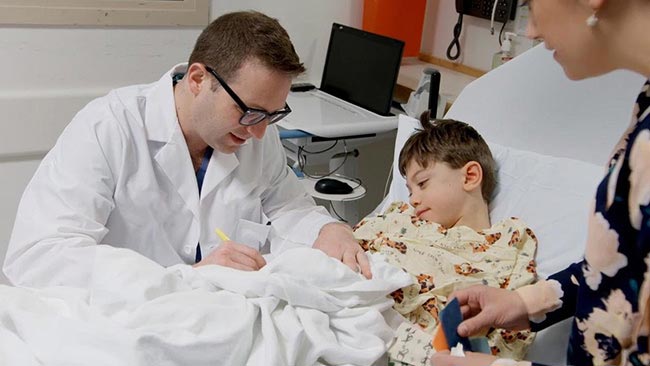
We know that children with birth injuries like hypoxic-ischemic encephalopathy (HIE) and cerebral palsy often require intense therapy, specialized medical treatment, and assistive care. The stress of providing for a birth injured child’s needs can be both emotionally and financially draining.
But just ‘knowing’ this is not enough. We act on this knowledge by providing exceptional services to birth-injured children and their families.
While Miller Weisbrod Olesky’s birth injury attorneys aggressively prepare each legal case, another department goes into action to help the families of children we represent. Led by a nurse-attorney, this department acts as a medical case manager for our birth injury clients by:
- Regularly monitoring the child’s medical treatment status,
- Helping facilitate medical treatment and therapy, and
- Arranging transportation and services.
Where necessary, we also help families locate local medical providers specializing in the care and treatment of children who have suffered a birth injury. With Miller Weisbrod Olesky, you’re not just a ‘case’. And that’s important when you’re looking for a lawyer who can help you cope with your child’s needs today.
Please call or email us today to get started.
Registered Nurses and Nurse-Attorneys Are a Vital Part of Our Birth Injury Team … and Yours

Most national birth injury law firms will employ one or two nurses to assist the review of cases and medical research. But Miller Weisbrod Olesky offers an unmatched number of nurses and nurse-attorney employees support to both the birth injury attorneys and our clients.
Our team of registered nursing staff and nurse-attorneys bring a deep level of medical and personal insight to every client’s case. Our nursing team includes both an experienced labor and delivery nurse as well as an ICU nurse. Working closely with the rest of the team, they investigate the reasons behind a birth injury and how medical professionals breached their standard of care.
Meet our Legal Nursing Team
Linda Chalk
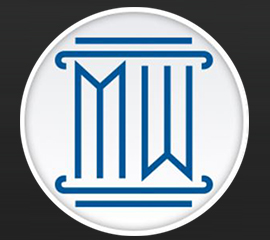
As a registered nurse, Linda practiced ICU nursing for 44 years while caring for a wide range of patient conditions. She has worked closely with founding partner Les Weisbrod for over 30 years, investigating and pursuing birth injury cases.
Along with DJ Weisbrod, Linda heads up the firm’s birth injury intake, screening, and medical literature research team. She personally screens all potential cases to ensure that medical issues have been addressed before we file lawsuits on behalf of birth-injured children and their families.
DJ Weisbrod
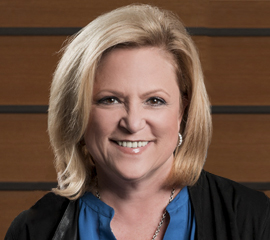
Before joining Miller Weisbrod, DJ practiced as a surgical nurse in various hospital and operative settings. She has been with the firm over 30 years.
DJ directs Miller Weisbrod’s birth injury intake and medical screening team. She has also served as firm founder Les Weisbrod’s trial nurse for all cases involving medical negligence and birth injury.
Linda Cuaderes

Linda Cuaderes is both a registered nurse and a licensed lawyer. Linda works exclusively in Miller Weisbrod’s Birth Injury and Medical Malpractice section. Linda acts as the firm’s patient advocate and liaison with our young clients and their parents.
Linda combines her legal and nursing experience along with her exceptional organizational talent and attention to detail to make sure each child we represent is provided the highest level of medical care and attendant care during the pendency of their case. Linda communicates with our parent clients regularly to monitor their birth injured child’s treatment, provide guidance as to additional care and therapies and when necessary assist them in obtaining specialized medical providers.
Linda was raised in Bartlesville, Oklahoma and completed her Bachelor of Science in Nursing with Honors at the University of Oklahoma. She started as an Oncology Nurse at Presbyterian Hospital in Oklahoma City, quickly becoming the Assistant Head Nurse of the Outpatient Endoscopy Unit. Linda then entered the University of Oklahoma College of Law.
Following graduation, Linda joined Les Weisbrod in the Medical Malpractice Section. After taking time off to raise her three lovely children, Linda returned to Miller Weisbrod and her passion of holding healthcare providers accountable for preventable errors. Linda is active in the American Association for Justice, Texas Trial Lawyers Association, Dallas Trial Lawyers Association, and the Texas Bar Association. Linda is an active member of the Birth Trauma Litigation Group and Medical Negligence Section of the American Association for Justice.
She is admitted to practice before the Texas Supreme Court and routinely works on cases pending throughout the United States. Linda has worked with child victims of birth injury, their parents and other victims of medical malpractice in Texas, New Mexico, Oklahoma, Arkansas, Louisiana, Iowa, Ohio, New York, Alabama, Georgia, Arizona, Utah and Missouri.
Education
- University of Oklahoma - School of Law, 1990, J.D. - Norman, Oklahoma
- University of Oklahoma - School of Nursing, 1985 - Norman, Oklahoma
Areas of Practice
- Birth Injury/Birth Trauma
- Medical Malpractice
Associations & Memberships
- Texas Bar Association
- American Association of Justice
- Texas Trial Lawyers Association
- Dallas Trial Lawyers Association
Kristin Jones
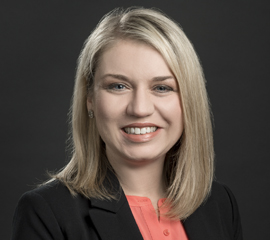
Kristin combines her medical and legal training to provide invaluable, passionate service to parents struggling to care for their birth-injured children.
Families often have questions as they go through the birth injury lawsuit process. Kristin diligently identifies and investigates all medical issues so the birth injury attorneys at Miller Weisbrod can answer those questions Kristin ensures that our birth injured children’s medical records are thoroughly reviewed and organized. Miller Weisbrod’s birth trauma litigation attorneys and medical experts retained by the firm need her services while pursuing justice for our clients.
Kelly Kunkel

Kelly Kunkel was born and raised in Dallas, Texas. She has 15 years’ experience in hospital based High Risk Obstetrics and Labor and Delivery bedside nursing care. Kelly graduated with an Associate’s Degree in Nursing from El Centro College in December of 1990 and received her Bachelor’s Degree in Nursing from West Texas A & M University in 2008; graduating with honors.
In addition, Kelly has over 25 years’ experience in medical malpractice case management and litigation and has worked with David Olesky for over 22 years. After many years of assisting in defending healthcare providers and hospital systems in medical malpractice cases involving complex litigation matters related to birth injury, catastrophic injury and death, Kelly has proudly joined David Olesky in the national birth injury and medical negligence practice at Miller Weisbrod Olesky.
Why Should You Talk with the Knowledgeable Attorneys at Miller Weisbrod Olesky?
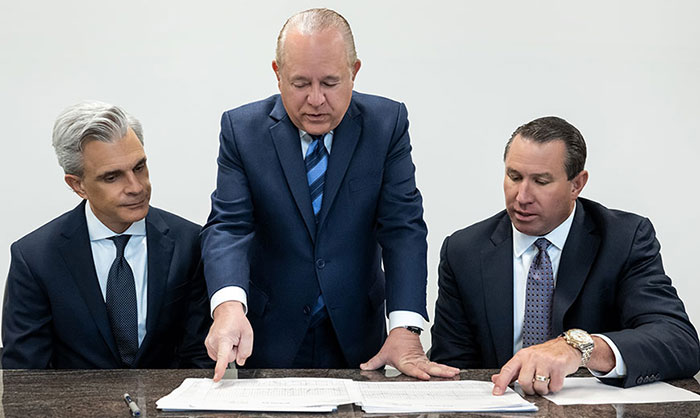
The only way to find out if you have a birth injury case is to talk to an attorney who understands birth injuries leading to a delay or failure in developmental milestones including birth injuries that cause cerebral palsy. The leading cause of cerebral palsy is hypoxic ischemic encephalopathy (HIE). Many times HIE is a preventable birth injury, but it takes a detailed expert review of the facts and circumstances of your child’s birth to determine the birth injury was the result of medical malpractice.
At Miller Weisbrod Olesky, a team of committed attorneys, nurses and paraprofessionals uses our detailed medical negligence case review process to assess your potential birth injury claim. We start by learning more about you and your child and the status of meeting or missing developmental milestones. Then we gather medical records to determine what happened before, during, and after your delivery. We call in skilled medical experts who review your records and let us know if they think medical errors could have caused your child’s injuries.
If we feel medical negligence caused or contributed to your child’s injuries, we meet with you to discuss how you can receive compensation from the medical professionals who made the errors.
At no point in our legal intake process will we ask you to pay anything. The medical review of your case and the consultation are free. We only receive payment when you do.
Contact Our National Birth Injury Lawyers
Our Birth Injury Attorneys
Les Weisbrod
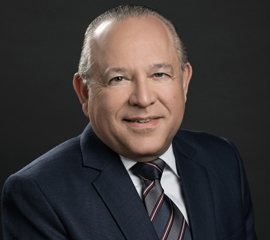
Les Weisbrod has been on the cutting edge of the national birth injury litigation scene for almost 40 years.
As a national birth injury attorney, Les has settled over 204 medical negligence cases for more than $1,000,000. He also obtained settlements in 75 birth injury cases for over $1,000,000 each.
His $31 million verdict against Baylor University Medical Center in Dallas was one of the top 100 verdicts in the United States that given year.
Les is recognized nationally and internationally as one of the top plaintiff’s medical malpractice trial lawyers in the United States. But the recoveries for the clients and the differences made in the lives of the children and families Les has represented tell only part of the story.
Les has worked with his law partner Clay Miller for years to build a one-of-a-kind law firm.
Miller Weisbrod Olesky provides unique and unparalleled services to families of birth-injured and brain-injured children from the moment the firm decides to take the case.
The registered nurses and registered nurse-attorneys on staff are valuable team members who assist Miller Weisbrod birth-injury clients. Les has designed a system where each birth injured child is assigned a nurse-attorney liaison to guide them through the process of medical treatment/evaluation, therapies, home assistance, and quality of life improvement.
Miller Weisbrod’s unmatched service allows families to better cope with the immediate challenges facing our young clients.
Birth-injured children and their families are Les and Miller Weisbrod’s priority.
Les and the attorneys at Miller Weisbrod fight for the justice their clients are entitled to under our nation’s system of justice.
This fighting spirit has taken Les across the United States to represent clients in birth injury and medical negligence cases. In fact, he has personally handled cases not only in Texas but also in Arkansas, Arizona, Colorado, Oklahoma, Louisiana, Utah, Iowa, Ohio, Oregon, Montana, Alabama, Georgia, Florida, and New York.
Les and Miller Weisbrod continue to expand their reach of helping brain-injured children to new states each year as we strive to bring a sense of justice to each affected family. And Les is not the only one who notices he fights for his clients.
Michael Rustad, a Professor of Law at Suffolk University Law School in Boston who has done extensive research on punitive damage awards, says,
“Les Weisbrod has obtained more medical malpractice punitive damage jury verdicts for his clients than any other attorney in the United States.”
Also, a well-known defense medical malpractice attorney dubbed Les Weisbrod the “pitbull” of the Texas medical malpractice bar in a media profile of Les published by a major newspaper.
Les shares his experience and knowledge to improve the representation of all birth-injured children and their families.
In the early 1990s, Les recognized that a more focused effort needed to be made to educate attorneys who handle birth injury cases. As a result, Les was the founding Co-Chair of the American Association for Justice (AAJ) Birth Trauma Litigation Group in 1991. He also was a founding Co-Chair of AAJ’s Medical Negligence Litigation Group in 1999 and served as Chair of AAJ’s Professional Negligence Section in 1996.
Combined, these groups have put on more than a hundred continuing education seminars across the United States. helping to educate other attorneys by bringing in world-renowned experts in the fields of:
- labor and delivery
- neonatal care
- the care and treatment of birth-injured children, including those suffering from cerebral palsy and hypoxic-ischemic encephalopathy (HIE)
Education and professional experiences back up his dedication to helping children and families harmed by medical malpractice.
Les received his B.A. magna cum laude in 1975 from Claremont Men’s College and his J.D. in 1978 from Southern Methodist University Law School.
He is Board Certified by the Texas Board of Legal Specialization in Personal Injury Trial Law and Civil Trial Law.
Les was a past president of the Dallas Trial Lawyers Association in 1993. He has been a member of the Texas Trial Lawyers Association Board of Directors since 1990.
His work with the American Association for Justice (AAJ) (formerly ATLA) includes serving as President, President-Elect, Vice President, Secretary, Treasurer, and Parliamentarian. Mr. Weisbrod has also served on the AAJ Board of Governors since 1998 and the 17-member Executive Committee of AAJ since 2001. In 1990, he was chosen as a Rising Star of the ATLA and presented a paper entitled “Dirt and Greed: A New Look at Medical Malpractice Cases.”
Les has written and lectured extensively on birth injury litigation, medical malpractice, and medical product topics.
Les is a contributing author to the 1996 text Operative Obstetrics published by Williams & Wilkins. He also co-authored the “Drugs & Medical Devices” chapter in AAJ’s Litigating Tort Cases.
He also has lectured to lawyer groups across the U.S., Canada, England, and Australia.
Education
- Southern Methodist University - School of Law, J.D. - Dallas, Texas, 1978
- Claremont Men's College - B.A. - Claremont, California, 1975
Areas of Practice
- Medical Malpractice
- Birth Injury/Birth Trauma
- Products Liability
- Personal Injury
Associations & Memberships
- State Bar of Texas
- National Association Of Distinguished Counsel
- Million Dollar Advocates Forum
- Multi-Million Dollar Advocates Forum
- American Association for Justice
- Texas Trial Lawyers Association
- Dallas Trial Lawyers Association
- Pan-European Organization of Personal Injury Lawyers
- American Society of Law and Medicine
- Consumer Attorneys of California
- Arkansas Trial Lawyers Association
- Louisiana Trial Lawyers Association
- Dallas and American Bar Associations
- ABOTA (American Board of Trial Advocates)
Clay Miller

Clay is Board Certified in Personal Injury Trial Law by the Texas Board of Legal Specialization. Clay has practiced solely in the field of catastrophic injury and wrongful death since graduating from law school. His practice has been limited to the representation of victims. Over the past twenty-four years, Clay has successfully settled or tried to verdict cases in the areas of vehicular negligence, medical malpractice, construction site accidents, workplace injury, premises liability, and commercial trucking and a nationwide business loss case (suits filed in a dozen different states) involving defective truck engines sold to trucking companies.
Clay represented dozens of trucking companies in lost profit and diminished value claims against Caterpillar in 2010 through 2012. These cases were filed in over a dozen states with the bellwhether trial set in Federal Court in Davenport, Iowa. After intense litigation and trial preparation, a global confidential settlement was reached for all the clients.
Clay's most recent 2017 victories are a $30,800,000 jury verdict in Tennessee arising from fraud claims in the sale of heavy-duty truck engines and a $26,500,000 jury verdict in a construction accident, obtained within 60 days of each other.
Clay was raised in Lewisville, Texas and completed his undergraduate degree in Finance at
Texas A & M University. Following graduation from Southern Methodist University School of law, Clay worked for two Dallas firms representing victims. In 1998, Clay began his own practice before forming his current partnership. In addition to his law practice, Clay has lectured at seminars and published in the areas of construction accidents, jury selection techniques, medical negligence, trucking accidents and settlement tactics.
He is active in local and statewide trial lawyers' associations including serving as the Chair of the Advocates for the Texas Trial Lawyers' Association in 2002 and remains on the Board of Directors. Clay served as President of the Dallas Trial Lawyers Association from 2008-2009. He has also been a member of the American Board of Trial Advocates (ABOTA) since 2014.
Education
- Southern Methodist University School of Law - Dallas, Texas
- Texas A&M University - Finance - College Station, Texas
Areas of Practice
Associations & Memberships
- State Bar of Texas
- State Bar of New Mexico
- State Bar of Colorado
- American Board of Trial Advocates (ABOTA)
- Texas Trial Lawyers Association
- Dallas Trial Lawyers’ Association
- American Association of Justice
David Olesky
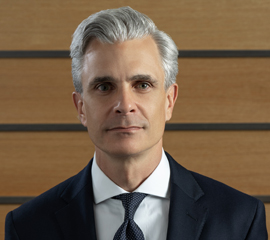
David Olesky is Vice Chair of the Health Care Professional Liability practice. David is a trial lawyer focusing his practice on complex litigation matters that involve defending and protecting clients in all types of cases related to catastrophic injuries or death, but with a special focus on birth injury cases. David regularly advises his health care clients on the issues and challenges that they face on a daily basis. Clients repeatedly look to him for guidance to handle such high stakes cases and matters in Texas and jurisdictions outside of Texas.
David has earned the trust and reliance of clients he has worked with by consistently getting the results that matter most to them, whether that is a win at trial or a favorable outcome through alternative dispute resolution outside the courthouse. Through his representation, David demonstrates a true loyalty and hardworking commitment to the clients that he serves.
David believes the foundation of any client relationship is to act as a trusted advisor instead of simply as a litigator. Clients value his earnest representation of their business interests, accompanied by a devotion to understanding their businesses, prompt attention to their immediate needs and the challenges they face in their individual roles.
Education
- Southern Methodist University Dedman School of Law, J.D., 1992 - Dallas, Texas
- University of Texas, B.B.A, 1989 - Austin, Texas
Areas of Practice
Associations & Memberships
- American Bar Association
- Dallas Bar Association
- Dallas Bar Foundation Fellow
- Texas Bar Association
Alexandra V. Boone

Alexandra Boone is a partner in Miller Weisbrod. She concentrates her legal practice in the area of birth injury, medical malpractice and mass tort products liability. Alex currently works directly with firm partner Les Weisbrod in managing the birth injury docket and working with the firm’s highly qualified expert witnesses in the review of potential cases. Alex also litigates her own docket of medical negligence cases.
Over the course of her 17 years with the firm, Alex has focused on the administration and prosecution of mass tort litigation, originally focusing on occupational toxins, but more recently in the area of pharmaceuticals and medical devices. In the past, she has actively pursed cases involving hormone therapy, Vioxx, Fosamax, and Reglan. Alex was also instrumental in our firm successfully resolving thousands of cases transvaginal mesh, hip prosthetics, and the blood thinner Xarelto. She is actively prosecuting over 1,000 cases.
In addition to being a member of the Texas bar, she is also licensed in Oklahoma and is a member of the American Association of Justice, Texas Trial Lawyers Association, Oklahoma Association of Justice and the Dallas Trial Lawyers Association.
Education
- Baylor University - School of Law, 1996, J.D. - Waco, Texas
Areas of Practice
- Products Liability
- Mass Tort
Associations & Memberships
- State Bar of Texas
- American Association of Justice
- Texas Trial Lawyers Association
- Oklahoma Association of Justice
- Dallas Trial Lawyers Association
Pro Bono Activities
- East Texas Legal Services/Nix Law Firm Pro Bono Project, 1996 - 1997
Robert Wolf

Robert E. Wolf was born in Dallas, Texas and graduated Magna Cum Laude as a proud horned frog from Texas Christian University in 1997, with Bachelor of Science degree in Political Science and was inducted into Phi Beta Kappa and Mortar Board. He obtained his law degree from Southern Methodist University in 2000 while serving as an Articles Editor for the International Law Review and winning awards at Mock Trial and Appellate competitions.
Robert has been named a Thomson Reuters | Texas Super Lawyers Rising Star (less than 2.5% of attorneys in Texas receive this distinction) in 2011, 2012, 2013, 2014, and 2015. Further, Robert was recognized as a National Trial Lawyers Top 40 Under 40 attorney for Texas in 2012 (no more than 40 attorneys in Texas are eligible for this award annually).
Robert brought his passion for and over 14 years of experience of representing seriously injured individuals and their families to Miller Weisbrod in January 2015, and has concentrated his legal practice in the area of medical malpractice, products liability, and pharmaceutical/mass tort litigation. He is a member of the State Bar of Texas, American Association for Justice, Texas Trial Lawyers Association, and Dallas Trial Lawyers Association.
In addition to many successful jury verdicts and settlements across Texas, Oklahoma, Iowa, Wisconsin, and Idaho, Robert’s role as an attorney representing victims and their families has led to numerous changes to key safety practices and policies and procedures at corporations and medical facilities.
Robert and his wife Suzy also get plenty of exercise trying to keep up with their precious and very active daughter.
Education
- Southern Methodist University - Dedman School of Law, J.D. - 2000 - Dallas, Texas
- Texas Christian University - B.S. Political Science - 1997 - Fort Worth, Texas
Areas of Practice
- Medical Malpractice
- Personal Injury
- Products Liability
Associations & Memberships
- State Bar of Texas
- American Association of Justice
- Texas Trial Lawyers Association
- Dallas Trial Lawyers Association
Carrie Vine

Carrie Lynn Vine has over 15 years of experience in medical malpractice litigation, with a particular focus in representing children and families who have suffered birth injuries as a result of the negligence of either doctors, nurses or hospitals.
She is a passionate advocate for her clients and has handled hundreds of birth injury and birth trauma cases throughout the United States. As part of Carrie’s national birth injury legal practice, she has handled cases in Texas, Arkansas, California, Nevada, Kentucky, Georgia, Illinois, Wisconsin, Ohio, Pennsylvania, North Carolina, South Carolina, Florida, and North Dakota. She is determined to seek justice and works to obtain fair compensation for the children and families she represents.
Carrie earned her law degree from Northern Illinois University where she tutored other law students. Prior to law school, she received her undergraduate degree from the University of Notre Dame in Biomedical and Biological Science, and earned both a Master’s Degree and a Ph.D. from The Pennsylvania State University in Anthropological Genetics. She then conducted post-doctoral research at the University of Michigan Medical School before deciding to attend law school. She applies an academic mindset and love of science and medicine to mastering the medical principles and literature relevant to the cases she pursues.
Carrie is an active member of the American Association of Justice as well as the Birth Trauma Litigation Group (BLTG).
Education
- Northern Illinois University:
Law School
- University of Notre Dame:
Biomedical Science
- Pennsylvania State University:
Anthropological Genetics
Areas of Practice
- Birth Injury/Birth Trauma
- Medical Malpractice
Associations & Memberships
- American Association of Justice:
Member
- Birth Trauma Litigation Group:
Member
Larry Lassiter

Lawrence R. Lassiter is an AV-rated attorney with more than twenty years of experience in appellate and trial advocacy. He has been consulted by attorneys across the country to conduct research, evaluate cases, prepare appellate and trial briefs, and formulate litigation strategy. He has prepared hundreds of appellate briefs in federal and state appellate courts, including the highest courts of Texas, West Virginia, Georgia, Oklahoma, Ohio, Nebraska and Tennessee, and he is member of the Bar of the United States Supreme Court. Larry has a national appellate and legal briefing practice. Larry has filed extensive briefs and/or argued before either state or federal courts in 30 out of 50 states in his career.
Larry assists the Birth Injury team in all aspects of legal briefing. Unlike many other birth injury firms across the United States, Miller Weisbrod has an attorney dedicated to handling legal briefing on behalf of our clients across the country. Larry has handled extensive briefing in birth injury and other medical malpractice cases in Texas, New Mexico, Arkansas, Oklahoma, Iowa, Ohio, Alabama, Georgia, New York, Utah, Arizona, Louisiana and West Virginia.
Since joining Miller Weisbrod in 2010, Larry has won a number of important victories vindicating the rights of our clients in both state and federal appellate courts, including Vitacost.com, Inc. v. McCants, 210 So.3d 761 (Fla. Ct. App. 2017); TTHR Ltd. Partnership v. Moreno, 401 S.W.3d 41 (Tex. 2013); In re E.B., 729 S.E.2d 271 (W. Va. 2012); Mid-Continent Cas. Co. v. Davis, 683 F.3d 651 (5th Cir. 2012); Rouhani v. Morgan, 2017 WL 3526719 (Tex. App. – Houston [1st Dist.] 2017, no pet.); Mid-Continent Cas. Co. v. Andregg Contracting, Inc., 391 S.W.3d 573 (Tex. App. – Dallas 2012).
He was as a judicial clerk for the Honorable Harlington Wood Jr., Circuit Judge, United States Court of Appeals for the Seventh Circuit. Larry was a University of Iowa Presidential Scholar and served as Editor in Chief of the Iowa Law Review.
Larry is an active member of the American Association for Justice. He is a member of AAJ’s Birth Injury Litigation Group and Medical Negligence Sections.
Education
- University of Iowa - Political Science & History - B.A. - Iowa City, Iowa
- University of Iowa - School of Law - J.D. - Iowa City, Iowa
Areas of Practice
- Appellate Advocacy
- Medical Malpractice
- Pharmaceuticals & Medical Devices
- Products Liability
- Personal Injury
Associations & Memberships
- State Bar of Texas
- American Association of Justice
- Texas Trial Lawyers Association
- Dallas Trial Lawyers Association
Laurie Pierce
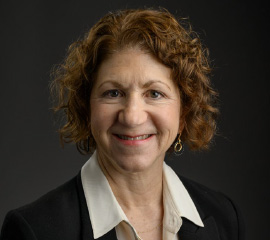
Laurie draws upon extensive experience in state and federal courts with a focus on complex claims involving medical malpractice cases. After many years of defending health care providers and hospital systems in medical malpractice cases, Laurie joined David Olesky in the national birth injury and medical negligence practice at Miller Weisbrod Olesky.
Laurie’s focus is to understand not only the facts and circumstances of the matter at hand, but to understand the specific needs and goals of the client and their unique business considerations. Her extensive background in commercial litigation provides a foundation that enhances her health care litigation practice. She works with clients that require more than a strong trial lawyer; they expect an attorney who understands the relationship between law and their specific business and who will work tirelessly to protect their rights, interests and bottom line.
Education
- Southern Methodist University:
Dedman School of Law - 1992
- Order of the Coif:
Journal of Air Law and Commerce, J.D. - 1992
- Miami University-Oxford, Ohio
B.S. Education - 1982
Areas of Practice
- Birth Injury/Birth Trauma
- Health Care Industry
- Health Care Litigation
- Litigation and Dispute Resolution
- Medical Malpractice
Associations & Memberships
- American Association for Justice
- American Bar Association
- Dallas Bar Association
- Dallas Bar Foundation Fellow
- Texas Bar Association
Distinctions
- Admitted to Pro Bono College of State Bar of Texas in 2019 for outstanding delivery of legal services to low-income Texans
Court Admissions
- United States Supreme Court
- U.S. District Court, Eastern District of Texas
- U.S. District Court, Northern District of Texas
- U.S. District Court, Southern District of Texas
- U.S. District Court, Western District of Texas
Linda Cuaderes

Linda Cuaderes is both a registered nurse and a licensed lawyer. Linda works exclusively in Miller Weisbrod’s Birth Injury and Medical Malpractice section. Linda acts as the firm’s patient advocate and liaison with our young clients and their parents.
Linda combines her legal and nursing experience along with her exceptional organizational talent and attention to detail to make sure each child we represent is provided the highest level of medical care and attendant care during the pendency of their case. Linda communicates with our parent clients regularly to monitor their birth injured child’s treatment, provide guidance as to additional care and therapies and when necessary assist them in obtaining specialized medical providers.
Linda was raised in Bartlesville, Oklahoma and completed her Bachelor of Science in Nursing with Honors at the University of Oklahoma. She started as an Oncology Nurse at Presbyterian Hospital in Oklahoma City, quickly becoming the Assistant Head Nurse of the Outpatient Endoscopy Unit. Linda then entered the University of Oklahoma College of Law.
Following graduation, Linda joined Les Weisbrod in the Medical Malpractice Section. After taking time off to raise her three lovely children, Linda returned to Miller Weisbrod and her passion of holding healthcare providers accountable for preventable errors. Linda is active in the American Association for Justice, Texas Trial Lawyers Association, Dallas Trial Lawyers Association, and the Texas Bar Association. Linda is an active member of the Birth Trauma Litigation Group and Medical Negligence Section of the American Association for Justice.
She is admitted to practice before the Texas Supreme Court and routinely works on cases pending throughout the United States. Linda has worked with child victims of birth injury, their parents and other victims of medical malpractice in Texas, New Mexico, Oklahoma, Arkansas, Louisiana, Iowa, Ohio, New York, Alabama, Georgia, Arizona, Utah and Missouri.
Education
- University of Oklahoma - School of Law, 1990, J.D. - Norman, Oklahoma
- University of Oklahoma - School of Nursing, 1985 - Norman, Oklahoma
Areas of Practice
- Medical Malpractice
- Birth Injury/Birth Trauma
Associations & Memberships
- Texas Bar Association
- American Association of Justice
- Texas Trial Lawyers Association
- Dallas Trial Lawyers Association
Kristin Jones

Kristin combines her medical and legal training to provide invaluable, passionate service to parents struggling to care for their birth-injured children. Families often have questions as they go through the birth injury lawsuit process. Kristin diligently identifies and investigates all medical issues so the birth injury attorneys at Miller Weisbrod can answer those questions. Kristin ensures that our birth injured children’s medical records are thoroughly reviewed and organized. Miller Weisbrod’s birth trauma litigation attorneys and medical experts retained by the firm need her services while pursuing justice for our clients.
Education
- SMU Dedman School of Law - Dallas, Texas
- University of Texas at Arlington - Arlington, Texas
Areas of Practice
- Medical Malpractice
- Birth Injury/Birth Trauma
Associations & Memberships
- State Bar of Texas
- American Association of Justice
- Texas Trial Lawyers Association
Matt Adair

Matt Adair is an attorney specializing in medical malpractice, products liability, and pharmaceutical litigation. He received his bachelor’s degree in Philosophy from the University of Notre Dame. During his time there, he studied abroad at the New College at Oxford University in Oxford, England.
Matt is a member of the State Bar of Texas, American Association for Justice, Texas Trial Lawyers Association, and Dallas Trial Lawyers Association.
Education
- University of Notre Dame - Philosophy, B.A. 2012 - Notre Dame, Indiana
- Baylor University - School of Law J.D. 2015 - Waco, Texas
Areas of Practice
- Medical Malpractice
- Products Liability
- Pharmaceutical Litigation
Associations & Memberships
- State Bar of Texas
- American Association of Justice
- Texas Trial Lawyers Association
- Dallas Trial Lawyers Association
Garrett Stanford

Garrett Stanford was born in Dallas, Texas and graduated from Southern Methodist University in 2017 with a B.A. in Political Science. After graduation, he attended Baylor University School of Law. During his time at Baylor, he was a member of the Order of the Barristers and he won the Judge W.C. Davis Endowed Criminal Practice Professional Track Award. He obtained his law degree and license to practice law in 2020.
Garrett joined Miller Weisbrod in August 2021. His legal practice is concentrated in the area of birth injury and medical malpractice. Garret is actively involved in handling birth injury and medical malpractice cases in Texas, Ohio, Utah, Arkansas and Oklahoma.
Education
- Southern Methodist University - Political Science, B.S. - Dallas, Texas
- University of Baylor - School of Law, J.D. - Waco, Texas
Areas of Practice
- Medical Malpractice
- Birth Injury/Birth Trauma
Associations & Memberships
- State Bar of Texas
